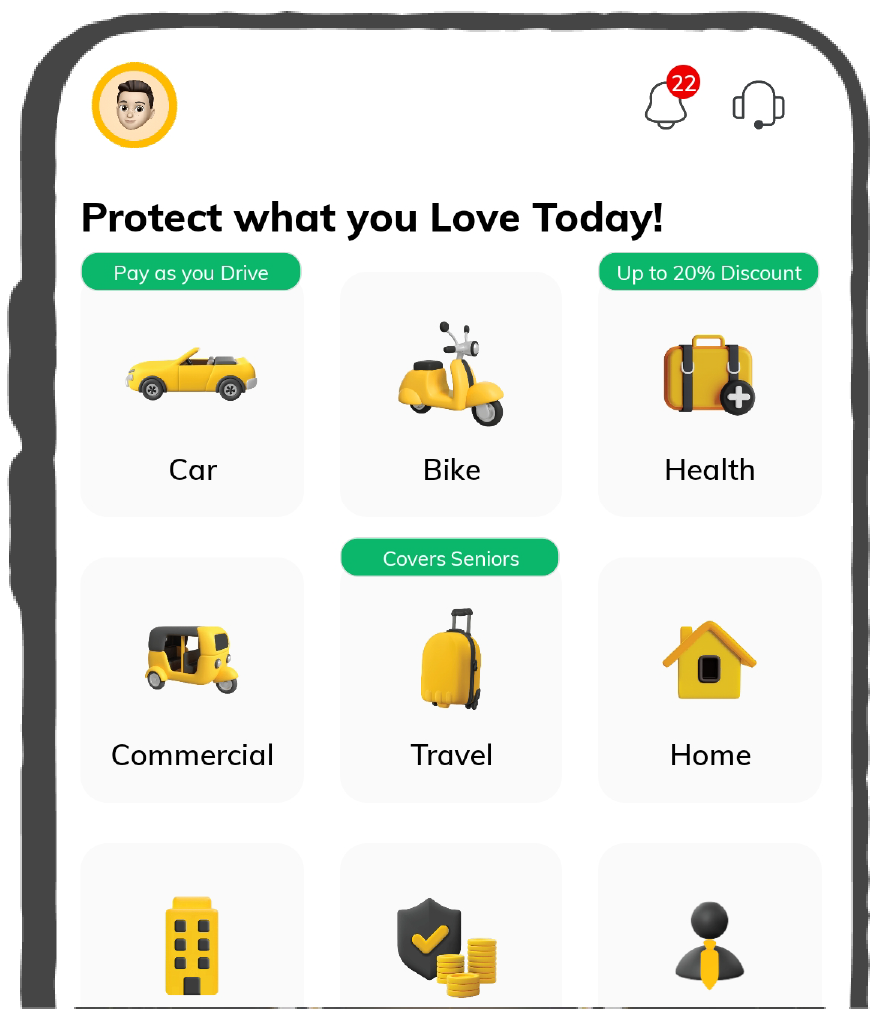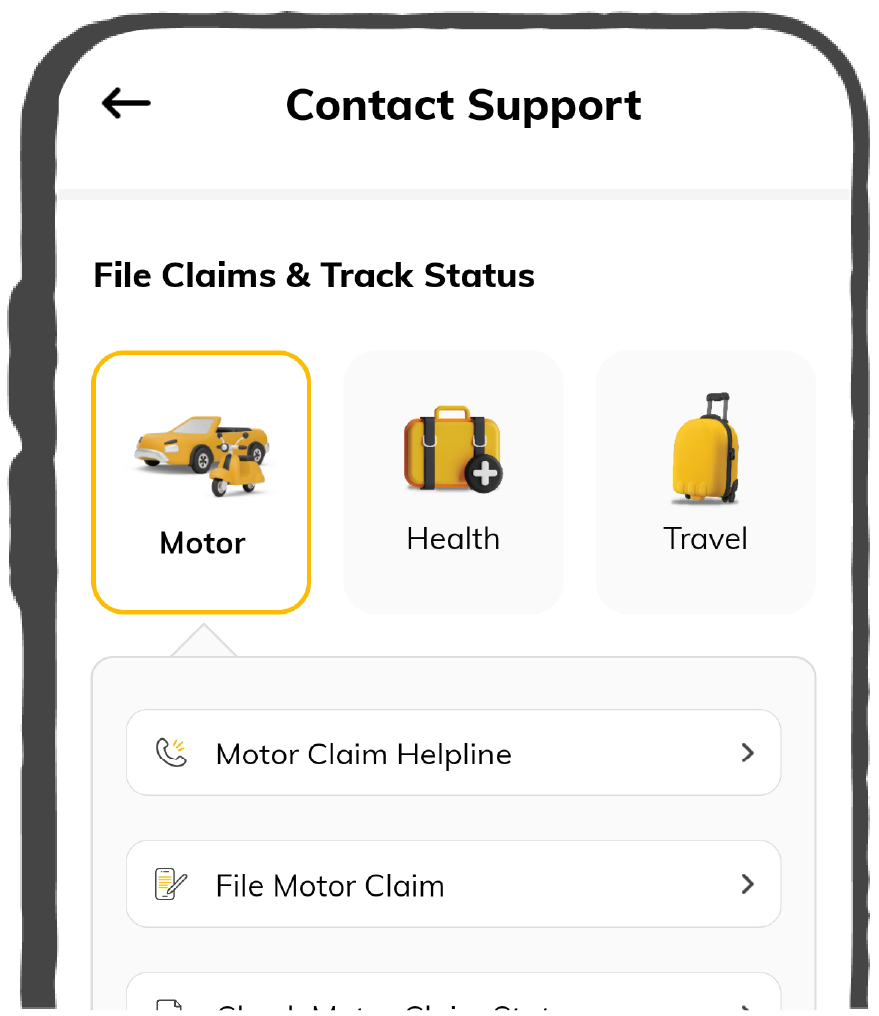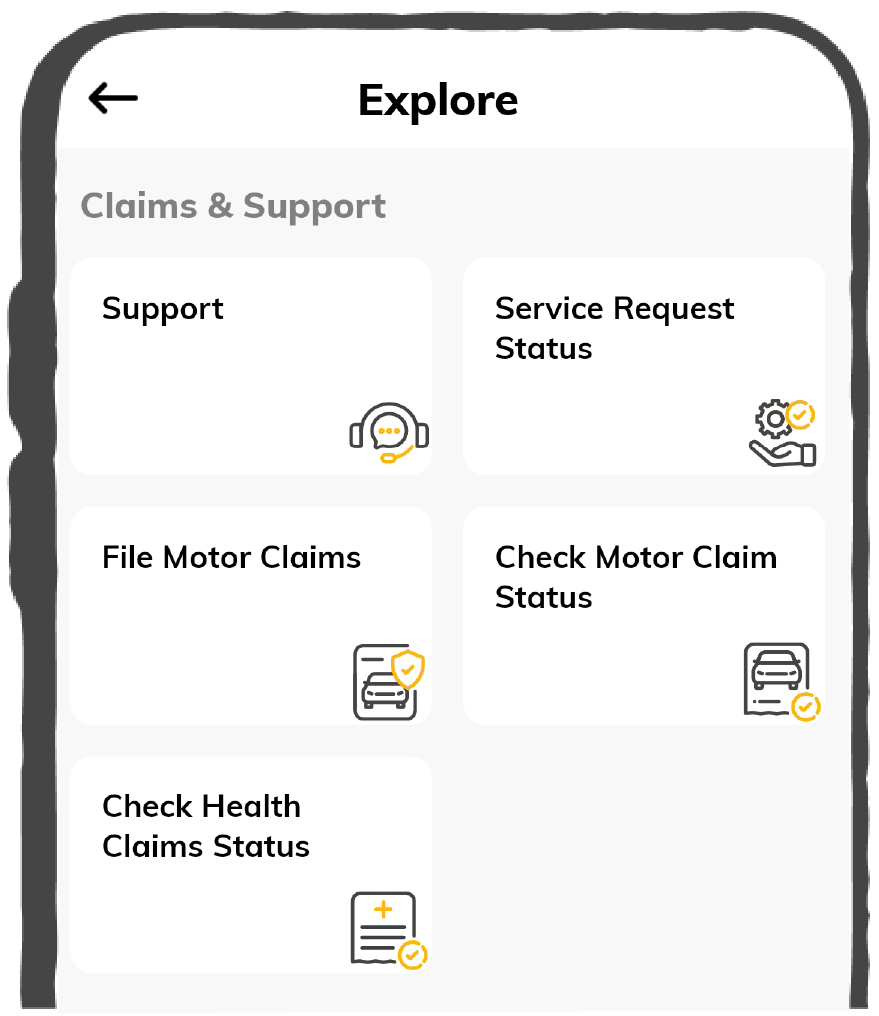
9000+ Cashless Garages
96% Claims Settled (FY 23-24)
Multi-Car Insurance Policy: Single Insurance for Multiple Vehicles

Managing insurance for many vehicles can be both time-consuming and costly. One way to overcome this issue is to go for multi-car insurance policies. It lets you insure all your cars under one policy. This policy is handy for families requiring a fleet of cars or an individual with several cars.
It allows for easy coverage maintenance for all the cars, avoiding several different plans. Additionally, it offers benefits like discounts and flexibility, making it an ideal choice for multi-vehicle owners. Read this article and discover how this type of insurance will bring you convenience, time, cost savings, and comfort for managing insurance for multi-cars.

Table of Contents

What is a Multi-Car Insurance Policy?
A multi-car insurance policy is an umbrella insurance policy that covers all the cars you own. This helps you manage all your car's policies in a single policy in the following ways:
- It ensures all your vehicles come under one plan with unified terms.
- This policy also comes with an added discount on your premium.
- All your cars will have the same premium and renewal date, preventing inconvenience.
- The policy can cover each car's risk according to your needs.
- The policy also covers third-party liability, thus acting as a comprehensive policy.
How Does a Multi-Car Insurance Policy Work?
Knowing the workings of this policy will help you understand whether it's the best fit for you. Let's explore the working of a multi-car insurance policy:
Step 1: Policy Setup
Under the multi-car insurance policy, you can insure up to 5 cars or vehicles. However, the vehicles should belong to or be registered to the same address and name. All the covered cars or vehicles have the same renewal and premium date.
Step 2: Premium Computation
You will be offered a discount for each car added to the policy by the insurer. This also reduces your overall premium. Each vehicle will have tailored coverage. For example, one car may have full coverage, and the other only has third-party liability.
Step 3: Remark Consolidation
Owned vehicles under one policy will share the same renewal date. This ensures ease of renewal and less likelihood of lapse. Insurers will also send you timely reminders to enable you to renew on time, with no coverage coaxing up for any vehicle.
Step 4: Claiming Process
There are claims for each car, but they are processed under the multi-car policy. Thereby, all communications with the insurance company are streamlined. The company provides a dedicated claims handler to resolve the claim issue.
What are the Benefits of a Multi-Car Insurance Policy?
If you struggle to manage your insurance policies for multiple cars, then a multi-car insurance policy is the solution. A multi-car insurance policy comes with various benefits, including:
Savings
A multi-car insurance policy saves your premium amount. Based on the number of vehicles you include in one single policy, your premium is reduced by the insurers. It allows you access to the discounts provided by the insurance firm.
Simplified Management
All your cars can be managed under one plan rather than selecting policies individually for each car. This thereby makes insurance for more than one car relatively hassle-free.
Efficiency in Saving Time
One can easily do all vehicle insurance coverages in just one multi-car cover, saving much in renewal paperwork because you don't have to take care of papers and renewals for each automobile.
Customisable Coverage
You can tailor your coverage to each vehicle's needs. You can have one car with higher coverage than the other. However, choose the coverage based on usage, value, and other risk profiles.
Unified Renewal
All vehicles fall under one renewal date, making policy updates and renewals seamless. This simplifies your insurance renewal process with a single renewal date for all your vehicles.
Change in Policies
You can add and remove the vehicles from the policy as per your requirements. It, in return, helps you adjust the insurance coverage pertaining to the evolving requirements.
Fewer Chances to Miss Renewals
Consolidating multiple insurance policies will reduce the possibility of forgetting to renew individual policies. This ensures constant coverage of your insurance policy renewals.
Streamlined Claims Process
It simplifies the claims process for all your vehicles. A multi-car policy allows you to handle all claims through a single insurer. This keeps you out of the hassle of policy updates and renewals.
What are the Documents Required to get a Multi-Car Insurance Policy?
The multi-car insurance policy requires several documents to get your vehicle an insurance policy. Getting to know them makes your policy registration smooth. Therefore, to make you aware, here is a list of documents to get a multi-car insurance policy:
- Identity Proof
- Address Proof
- Vehicle Registration Certificates (RCs)
- Previous Insurance Policies
- Driving Licenses
- Photographs of Vehicles
- Bank Details
- Income Proof
- Pollution Under Control or PUC Certificate
How to Qualify For Multi-Car Insurance Discounts?
Securing discounts on a multi-car insurance policy is easy. You must meet specific criteria and take advantage of insurer offers. Here's how you can qualify:
Insure Many Vehicles Together
Bundle two or more cars under a single policy. This helps unlock multi-vehicle discounts.
Register All Vehicles at the Same Address
Ensure you register all cars under the same household, as it bundles up your vehicles.
Install Anti-Theft Devices
Equip vehicles with insurer-approved anti-theft devices for extra premium reductions in your policy.
Maintain a Good Driving Record
A clean driving history for all listed drivers lowers the policy insurance rates.
Leverage No Claim Bonus (NCB)
Transfer NCB from previous policies to your multi-car policy to reduce the premium.
Opt For Online Policies
Purchasing policies online often comes with extra digital discounts, so use the online option if available.
Renew Policies on Time
Ensure timely renewals, avoid penalties, and maintain discount eligibility, thus saving your money.
How Many Cars Can You Add to One Policy?
Most insurance providers permit insuring anywhere from 5 to 7 vehicles under a standard multi-car insurance policy. However, the number of vehicles may differ based on insurance clauses. The cars will only be qualified for a multi-car insurance policy if registered at the same address.
A multi-car insurance policy enables you to create custom coverage for each car. It is founded on specific needs, like whether you choose comprehensive or third-party insurance. To ensure you meet every requirement and the limits of your eligibility, check with your policy insurer the number of cars allowed for your policy.
Pros of Motor Floater Insurance Policy
Motor Floater Insurance can be taken out to cover several vehicles under one policy. This confers flexibility and cost savings. Let's see the pros of this policy in the table given below:
Cons of Motor Floater Insurance Policy
Although a motor floater insurance policy has various advantages, it also has several drawbacks. A few of the major drawbacks include:
Customising Coverage For Each Vehicle Under a Motor Floater Policy
The Motor Floater Policy also enables one to provide coverage for multiple vehicles within the same policy as desired by your needs. Thus, this insurance policy can be crafted according to the requirements and needs of each specific vehicle. Full coverage is better if someone uses a car for long journeys more frequently as it provides greater ease.
Third-party liability coverage may be sufficient if one only uses the car very rarely. Drivers' age, value, and habits will also decide the level of coverage. Customising the coverage ensures that every vehicle gets the appropriate protection without overpaying for unnecessary coverage. This is the personalised approach of motor floater policies, which can adapt to various needs by offering convenience and cost savings.
How to Get Multi-Car Insurance Quotes?
Getting a quote for multi-car insurance is straightforward and accessible in several ways. Here is how you get correct quotes on many vehicles being covered under the same policy:
Visit Insurance Websites
Many insurance companies let you quote several cars on their websites. Fill out the details of every car you would like to cover. Ensure you input the correct information for every vehicle to get the quote.
Use Online Comparison Tools
There are many online sites where you can compare multiple car insurance quotes from various providers. These platforms show you different pricing options, discounts, and coverage features.
Provide Vehicle Information
When getting quotes, provide the necessary details about each vehicle. This includes the registration number, make and model, year of manufacture, and how you use the car (personal use, business, or other).
Enter Household Details
In most multi-car policies, all the vehicles must be registered at the same address to be eligible for bundling discounts. Enter your correct household details and ensure all your vehicles are roadworthy.
Custom Request
If you want special coverage for a particular car, such as full coverage, third-party, or accident protection, tell the insurance provider what you want in terms of insurance while requesting a quote.
Talk to an Agent
If you want individual help or are undecided about the various types of insurance coverage you need, find an insurance agent. The professional can guide you through the process and provide quotations according to your needs.
Click "Get Quote"
Fill in all the required information, then click the "Get Quote" button. Then, quotes will be received from hundreds of insurers. You can then select the best policy for your multi-car policy.
Review and Finalise
Once you have received your quotations, review coverage limits, premiums, and any additional benefits or exclusions that may apply. If you're satisfied with an insurer's offer, finalise the policy.
How to Manage and Update Your Multi-Car Insurance Policy?
Managing and updating your multi-car insurance policy is very important. It ensures and reflects vehicle changes and coverage changes for your vehicle. Here are some easy tips to keep your policy up-to-date:
Review Your Policy
Review your multi-car insurance annually. Update when major changes occur in your vehicle or proof documents.
Update Vehicle Details
If you buy a new car or sell an existing one, inform your insurer immediately. Update the policy and ensure all vehicles are accurately covered.
Change Coverage for Each Car
If a vehicle's usage or value changes (e.g., upgrading or modifying the car), update its coverage level. This will reflect these changes.
Use Online Portals for Quick Updates
Many insurers offer online platforms where you can quickly update, add vehicles, adjust coverage, or renew the policy.
Contact Customer Support
If you have any doubts or need further help, contact customer support. It will help manage or adjust your multi-car policy.
Track Renewal Dates
Note the policy renewal date to ensure timely payment and prevent coverage lapses. If needed, adjust coverage before renewal.
Multi-car insurance is a beneficial alternative for a household with more than one vehicle. It serves to simplify insurance for you because all your cars are under a single policy. In this way, you save time and cut down on paperwork.
However, it's equally important to consider your own needs. If your cars are used for different purposes requiring special coverage, make sure that a multi-car policy can provide this. This will ensure you live peacefully by saving money and securing your vehicle.









